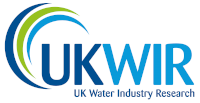Sink to River - River to Tap: Review of potential risks from microplastics
UKWIR – the UK and Irish water industry’s research body – has commissioned the first study of its kind in the UK to develop a robust approach to sampling and detection of microplastic particles in the treated water cycle. This included accurately measuring the presence of microplastic particles in potable (drinking) water, treated wastewater and in the solid residues (sludge) produced by both the water and wastewater treatment processes.
UKWIR commissioned the Centre for Ecology & Hydrology, a world-class research organisation focusing on land and freshwater ecosystems and their interaction with the atmosphere and human activities, to undertake this important research study for the water industry.
This research has confirmed that both the water and the wastewater treatment processes effectively remove 99.9% of microplastic particles detected prior to treatment from the final product i.e. the potable water and treated wastewater. It also demonstrates that a robust process for sample collection and analysis, that minimises and takes account of possible airborne and laboratory contamination, is vital to ensure accurate results.
For this study, the methods allowed for the capture and chemical identification of microplastic particles down to 25 µm in size.
The issue of plastic pollution and the presence of microplastic particles in our environment has rapidly grown in prominence both nationally and globally. For the UK and Irish water industry, understanding where and in what quantities microplastics exist within the water environment is critical to ensure it can continue to provide safe, healthy drinking water supplies while protecting our environment sustainably.
Microplastic particles, which are shed from washing clothes or incorporated into household products for example, leave homes and businesses and enter the sewerage system. Because they are not easily broken down the wastewater treatment process does not entirely eliminate them so some will be released back into watercourses via treated wastewater. They are also present in runoff from roads, land and urban areas so can enter the sewerage system and watercourses that way too. This means that microplastic particles are likely to be found in rivers, which are used as raw water sources for the production of drinking water.
At present, standard approaches to measuring microplastic particles in water, wastewater and solid residues such as sludge do not exist. There is also limited information about the levels found in water at different points of the water cycle.
The project analysed samples taken over a seven-month period from eight water treatment works and eight wastewater treatment works across the UK. The sites chosen represented a range of different treatment processes used by UK and Irish water companies. The methods used ensured the highest quality was maintained through the sample collection and laboratory analytical stages to provide accurate and robust results. Significant effort was made to understand, quantify and correct for any airborne or process-derived contamination to ensure confidence in the results.
Drinking water – more than 99.9% of microplastic particles are removed through the drinking water treatment process with potable water containing on average 0.00011 microplastic particles per litre (mp/l).
Wastewater – 99.9% of microplastic particles are removed through the wastewater treatment process with treated wastewater containing on average 5.1 microplastic particles per litre (mp/l).
Sludge – because the water and wastewater treatment processes are very effective at removing microplastic particles, these particles are present in the sludge produced by these processes, with typical levels of 2,000-4,000 microplastics particles/g dry weight of sludge being found.
Plastics found – the most common plastic polymers found:
• in potable water samples were polystyrene and acrylonitrile butadiene styrene
• in treated wastewater samples were polyethylene, polyethylene terephthalate and polypropylene
• in sludge samples were polyethylene and polypropylene.
These are common plastics that can come from a wide range of sources such as plastic bottles and bags, clothing, sanitary products and car parts.
Recommendations:
- The development of standard processes with robust Quality Assurance (QA) systems, that minimise contamination and account for this with analytical blanks, are needed for future research, sampling
and analysis
- Further and more detailed investigations should be undertaken with regards to the source of the microplastic particles found to enable effective controls at source to be developed
- For the sludges generated as a by-product of the treatment processes used in water and wastewater treatment, investigations should be undertaken on the potential impact of the presence of microplastics on the recycling of these materials.
What next:
The findings and recommendations from this study, and a separate stakeholder workshop that has been held, will be used to inform discussions between the water industry, its regulators and key stakeholders to further define, develop and prioritise the next research steps. These will be captured in a research ‘route map’ which will be used to focus efforts to answer our research Big Question – “How do we achieve zero harm from plastics via our operations and activities by 2050?”. This will be available on UKWIR’s website later this month (www.ukwir.org).
Access a full copy of the report here
